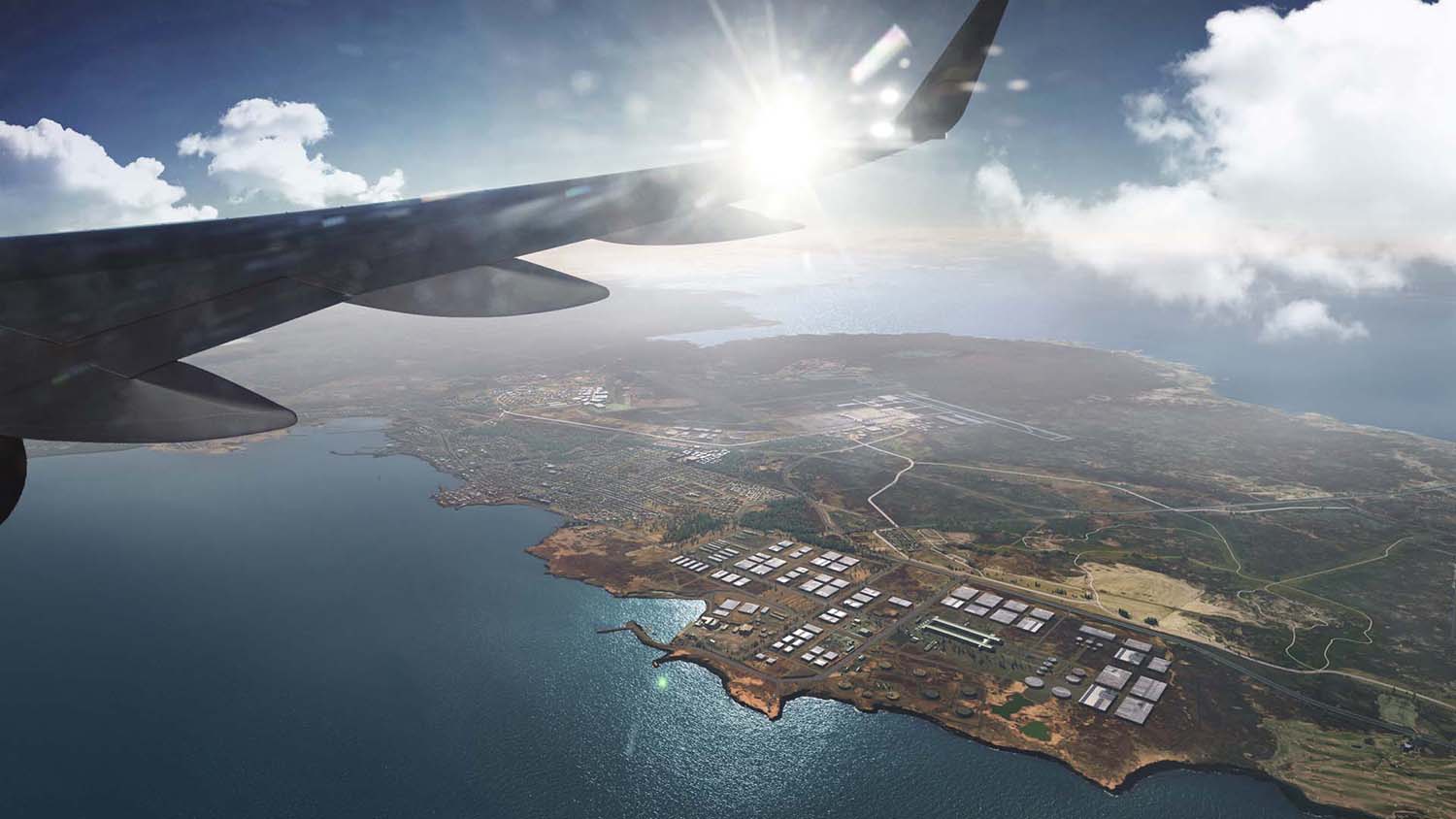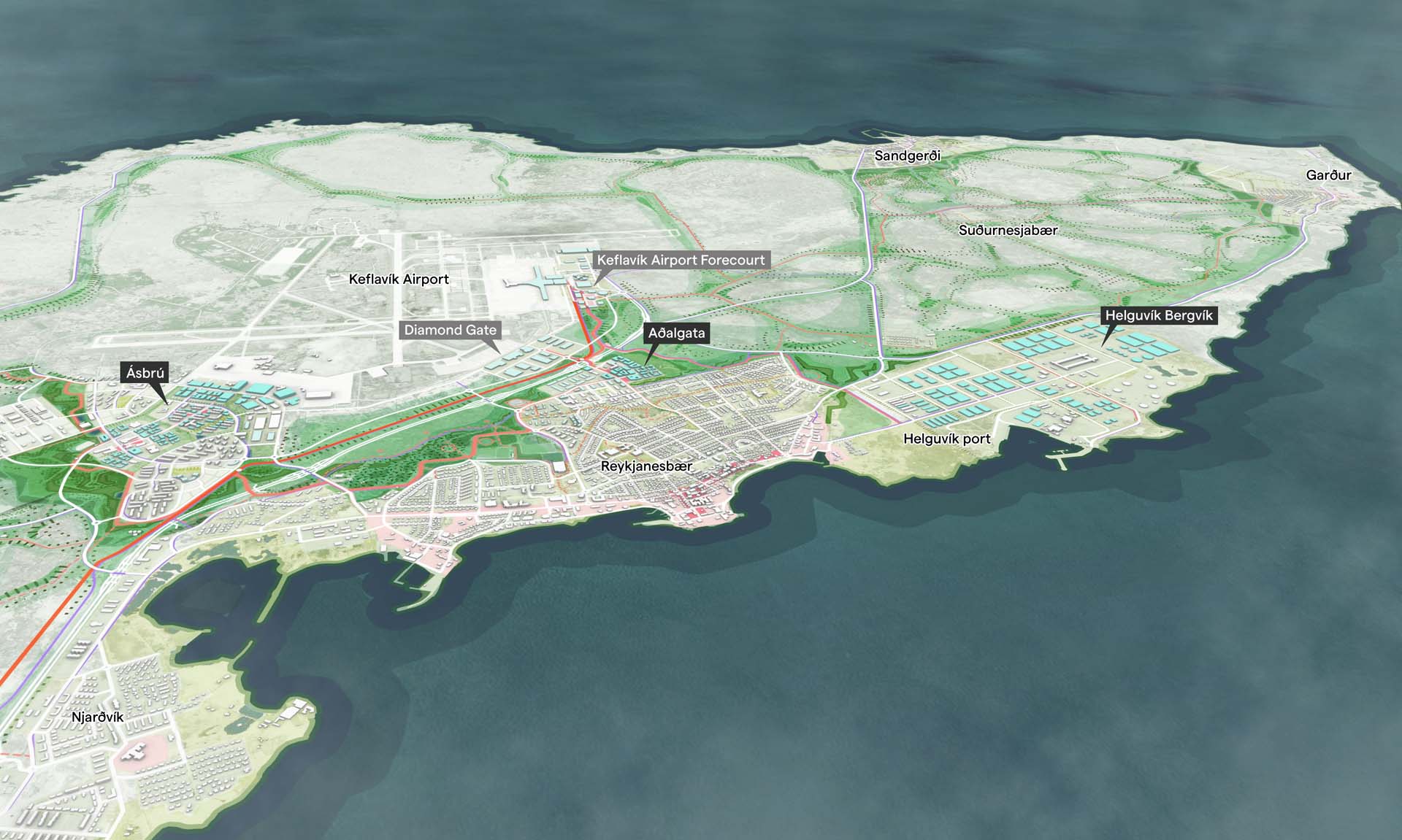
Dutch architect KCAP has published its masterplan for the future of Reykjavik’s Keflavik Airport, setting out an ambitious plan to turn the largely undeveloped Suðurnes peninsula into an industrial powerhouse.
Commissioned by the Keflavik Airport Development Company (Kadeco), the plan aims to create a hub for the aviation, energy, and tech sectors.
KCAP’s plan covers the entire 55-sq-km peninsula, located 50km southwest of Reykjavik. Kadeco hired KCAP to draw it up in December 2021 (see further reading).
New communities will be developed around the airport, including the mixed-use Aðalgata district, combining residential, community, and research buildings.
On the airport’s southern edge, Asbru will become a campus-like area catering for aviation, research, light industry, and residential.
KCAP said it would be “a modern take on the cosy, lively village”.

Between the airport and the town of Reykjanesbær, the Helguvik area will be earmarked for eco-industrial development. This will involve creating a “circular-economy environment” comprising a construction hub and a sustainable aviation fuel facility.
The areas between these clusters will become a park. Newly-planted trees will mitigate the island’s harsh climate and allow for outdoor activities and cycling networks.
High-speed rail link
Public transport will include a peninsula-wide demand-responsive transport system and a high-speed rail link with Reykjavík. There will also be renewable local energy systems.
KCAP partner Anouk Kuitenbrouwer said working on the spatial and economic masterplan had been “an incredible journey”.
“We hope that the joy and inspiration we have experienced in collaborating as a team and with the many stakeholders translated into a robust plan for this ambitious long-term endeavour,” she said.
As well as KCAP, the development team included Canadian engineer WSP, UK consulting engineer Buro Happold, Dutch landscape architect Felixx, Italian mobility consultant Mic-Hub, Norwegian energy specialist VSO Consulting, Dutch project manager Buck Consultants International, Dutch urban planning consultant Maurits Schaafsma, and Icelandic designer Kanon Arkitektar.










